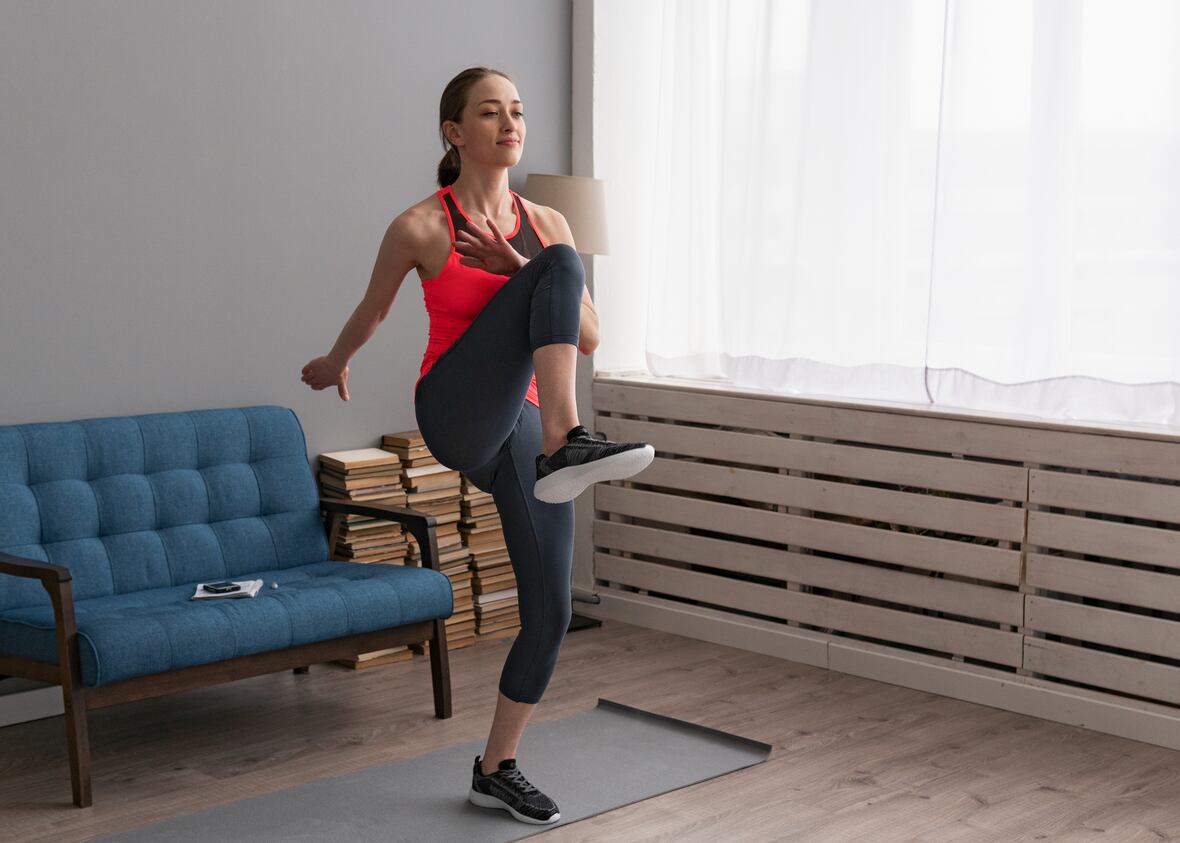
Marching in place is a low-impact exercise and helps burn calories, especially for people with obesity. According to the American Council on Exercise, marching in place is a great method for obese individuals to get cardio in without the risk of injury that’s associated with high-impact activity.
Marching in place is again a good baseline for those new to fitness — and the progression levels for this exercise come naturally.
Once you have marching in place down and are ready for an added challenge, try incorporating arm movements, up and down overhead, as you march to incorporate full-body movement. And once you build up confidence, you can increase your intensity and turn your march into a light jog in place.
With marching in place, if you want to alternate your arms and your leg motion so that you’re getting your knees going as high as you’re comfortable towards the ceiling and your hands as high as comfortable towards the ceiling, as well.
About keeping your arms in the straight plane and not going across your body.
Marching in Place
- Pay Attention to Knee and Hip Control
- Pay attention to what your knees or your hip control is doing.
- Do not step across your body, avoid letting it happen till the end. Stay conscious & focussed while marching.
- Keep a track of your posture when you go for walk, doing it when they go up stairs, so that you don’t end up with knee issues. Note, if you march like this or step up like this, your knees are always at a bit of an angle, and so they are compromised when you’re going to be stepping up stairs or even walking.
The number of calories you burn while exercising is dependent on,
- The exercise you do
- Your weight, and
- The time spent doing the exercise.
Use the calories burned calculator to track your progress.
Try to get into a good habit of stepping in a straight plane with the knees over your second toe and your hands reaching up to the ceiling, and just stand long and tall through the back.
That’s it for the marching in place exercise. Remember to listen to your body — we all have different levels of fitness and are challenged by different levels of activity.
Disclaimer
The Content is not intended to be a substitute for professional medical advice, diagnosis, or treatment. Always seek the advice of your physician or other qualified health provider with any questions you may have regarding a medical condition.